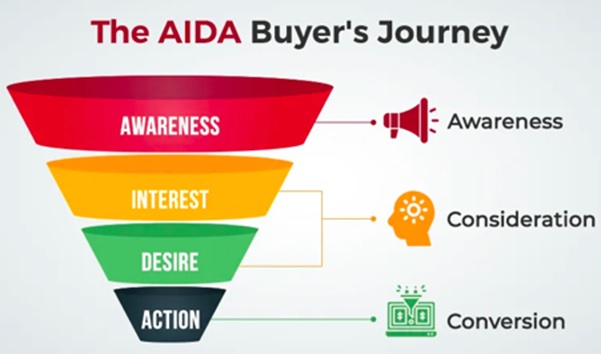If you are a business that wants to create high value content and then market it to appear on search engine rankings, earn traffic and leads, then the first thing you need is a solid content strategy in place.
Without a content strategy in place, content marketing is not going to yield results since you are not doing it the right way. You are just churning out content without tying it to any goal, process, optimisation or KPI.
Also, many people think view “content strategy” to be a really long document, which can be crafted only by specialists. That is not true.
A content strategy document can be created by a business owner himself or herself and does not need to be an expansive or an expensive process of creating a 100-page document.
So in this blog, we decided to take all the methods and processes we have been using over a decade and put them together to create an easy 8-step guide that anyone can use to create a content strategy for their own business.
How you will build your content strategy will depend a lot on the nature of your business or what your client has asked for. Whatever be the case, this template should help you achieve the objective.
But before that, let us understand what is a content strategy.
What is a Content Strategy?
Content marketing strategy is a series of steps that you take to put forth your content marketing plan in action and meet your business goals.
It answers the questions of Why, Who, How, Which, and Where. Without a content strategy in place, creating and publishing content is like throwing at the dart board with a blindfold.
If you are building a new content strategy, also known as a content marketing strategy, or reviewing your old one to suit the current times, here are the main questions to answer.
- What are your goals/objectives for investing in your content marketing campaign.
- What are your KPIs
- Who are you trying to create this content for? Who is your target audience?
- What type of content are you trying to create?
- Which content channels are you focussing on?
- What is your creation and distribution plan?
- How are your tracking your content’s performance?
If you have got these answered, you have your strategy in place, and you are all set to turn strangers into buyers.
Why is Content Marketing Strategy Important?
Having a content marketing strategy makes sure you are not randomly creating content, and waiting for results to happen. With a content strategy map you know which audience you are targeting, how much budget are you setting apart for the campaign, which platforms are you using, what are you spending, what are you gaining and what are you failing at.
You also know how much content to create, what formats to create, how to scale the production, and who will be doing it.
Without all these information in place and documented, your content marketing efforts cannot yield the kind of results you want for your company.
Interestingly, 57% of content marketers still do not have a content strategy in place in 2021, according to Content Marketing Institute”.
We see this for a lot of brands that we work for and that is why we decided to put together this blog. So let us begin.
We will explain the how to create a content strategy in 8 simple steps
1. Create a goal for content marketing
2. Find your Target Audience
3. Know what type of content you want to create
4. Find What Your Reader Is Looking for
5. Find topics that will drive traffic to your website
6. Create a content calendar
7. Plan how will you promote your content
8. Track your results from content marketing
1. Create a goal for content marketing
Goal setting does not have to be hard or complicated. One way to do is set S.M.A.R.T goals.
This basically means –
S stands for SPECIFIC = The more specific or narrowed down your goal is, the easier you know how to reach it.
M stands for MEASURABLE = How goals can be measured. The key to this is that it should accurately reflect success/achievement of the goal.
A stands for ACTIONABLE = What are the actions required to achieve the goal?
R stands for Relevant = This should be relevant for your business and should help you achieve/improve something.
T for Time-bound = Set a date within which you want it to be completed.
If this is too complicated, you could simply put a goal that is most easily visible to you.
For example, some of your goals could be –
Getting 50% more traffic to the website in the next 6 months
Getting 2x more leads in the next 1 year.
Increase brand visibility
Establish yourself as a thought leader in your niche
2. Find your Target Audience
Who are you trying to sell your services to? Not everyone. You are trying to get only a certain type of buyer to buy from you. Until you know who that is, marketing campaigns will be useless.
For example, the target audience of our Client X who owns an online grocery will be people who want to buy grocery from him.
Narrowing it down further, the target audience will be predominantly female urban audience who want to save their weekend shopping time and instead use it to spend time with the family. Their primary need is to ensure that the grocery shopping is within the family budget.
If you are not sure yet of who is your buyer, it is best to draw up a buyer’s persona.
This is where you can draw up a Buyer Persona – an imaginary buyer who will have the common characteristics of someone who you are trying to sell to.
For example, for our ecommerce grocery owner, the buyer is something like –
Age – 30-55
Gender – Mostly women, working couples, even urban men
Challenges – Lack of time to do grocery shopping in actual shops
Goal – Seeking convenience of shopping, at any time, any day.
Type – People who use online shopping, are savvy with tech, want budget and good deals and want local and fresh vegetables.
Content Consumed – Videos, social media, blogs
Preferred Channels – Social Media, Google
If you already know who your audience is, you can skip this step ofcourse.
3. Know what Type of Content Do You Want to Create?
The type of content you want to create will depend on the following things –
– What does your audience want from your product/service?
– What is your audience’s pain point?
– What is the current condition of your content landscape? What are your content gaps?
– What is your competitor doing that is taking away the audience?
Based on this, reassess what are your capabilities in content creation and the budget you are willing to spend.
Here is an interesting theory by Ahrefs, on how should you choose your content type.
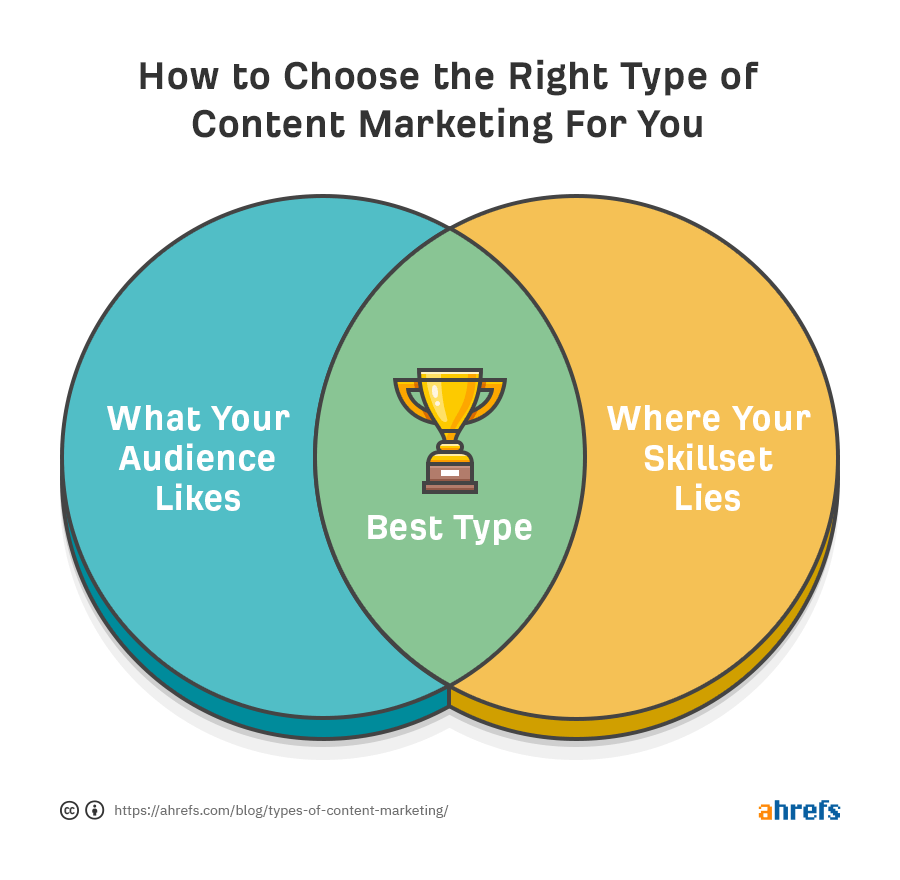
Not sure what kind of content should you be creating. Here is a great post you could refer to that outlines 12 different content formats that you could use in 2021.
Apart from this, your content will also depend in on the BUYER JOURNEY.
A typical buyer moves through different stages of the buyer journey. The earliest model that was developed for understanding this buyer journey was the Elmo Model.
Basically, each buyer moved from through all these stages before making a buying decision.
As a business owner or marketer, you need to be able to comprehend what the consumer is looking for at every stage of the Buyer Journey, his search intent, and create content as per those.
For eg, if your consumer is in the awareness stage, creating an exhaustive blog would help get his attention that your brand exists. Ofcourse, your blog first needs to rank first for the keyword he or she is searching for.
But if he is not being able to make up his mind and he is going back and forth in the consideration stage (stuck in the messy middle), a case study is more the type of content you want to serve him. That will help move him closer to a buying decision.
Here is an excellent guide on the Buyer’s Journey and what content do you need to create at every stage.
4. Find What Your Reader Is Looking for
Based on which stage of the buyer journey you are trying to find keywords for, find keywords that have a high volume and low keywords difficulty.
You could either use a tool like Google Keyword Planner, and then find a range of keywords that match the seed keywords. You can keep narrowing down your list of keywords by adding newer keywords which have high search intent.
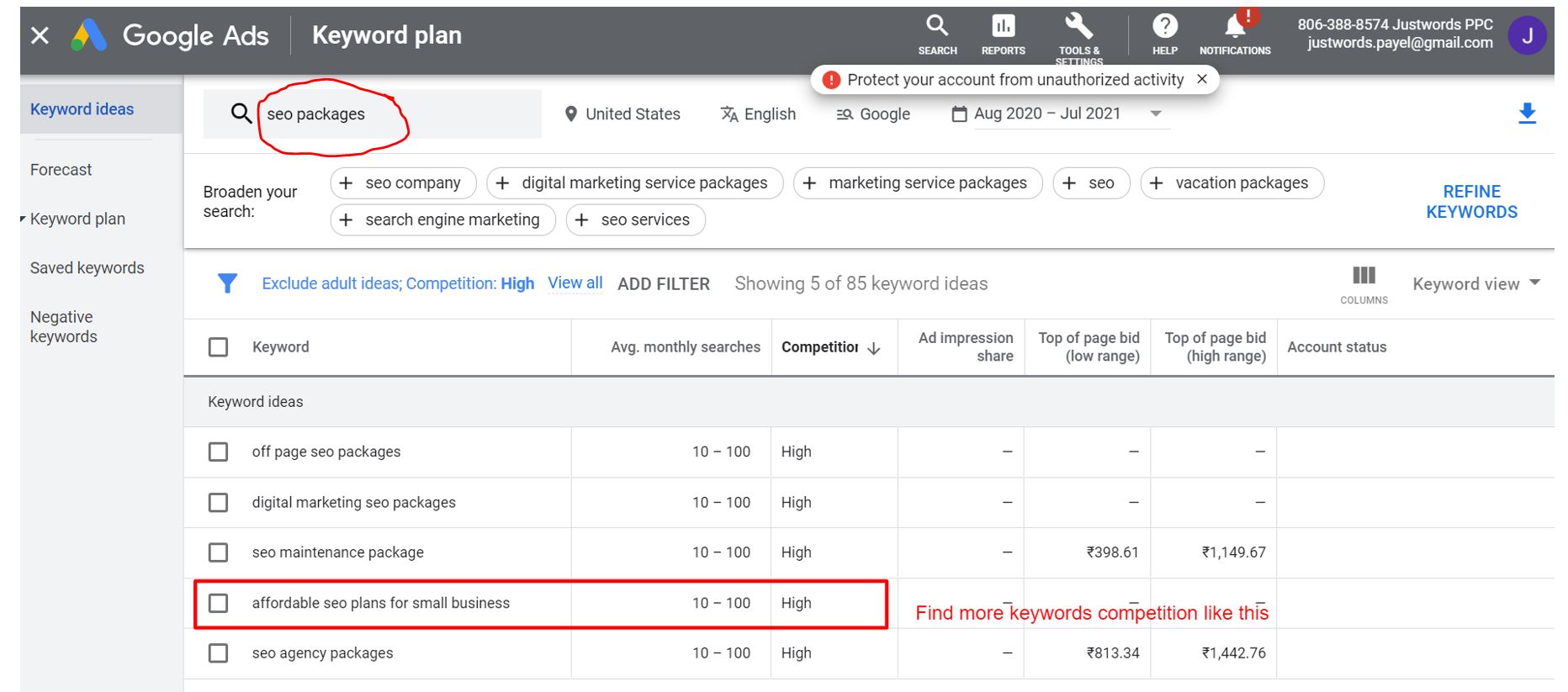
This way you get a narrowed down list of keywords to use for your category. If you want to find the best keywords for a particular stage, you can refer to this list and search accordingly –
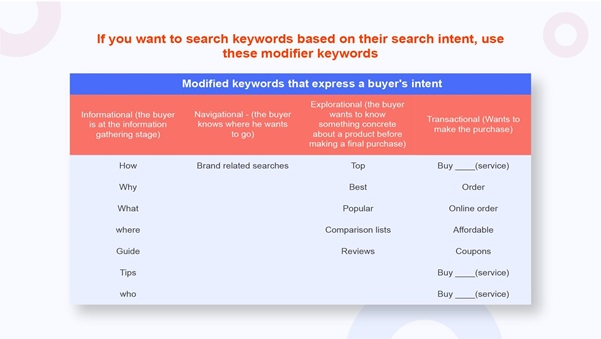
It’s much easier using a keyword tool. For example, you could use Ahrefs Keyword Explorer.
Grab the Low-Hanging Fruits with Data from Tools
This could help you find out the “Top Pages” for which your competitor is ranking for.
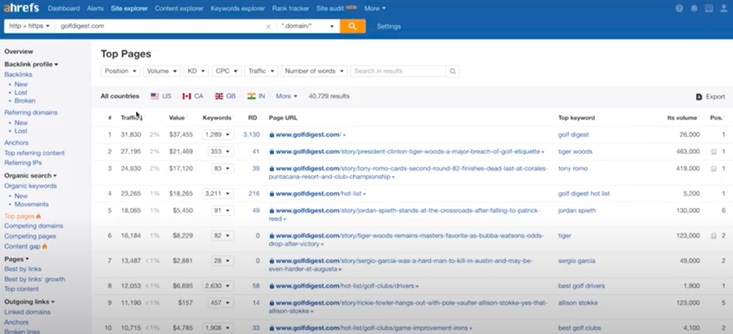
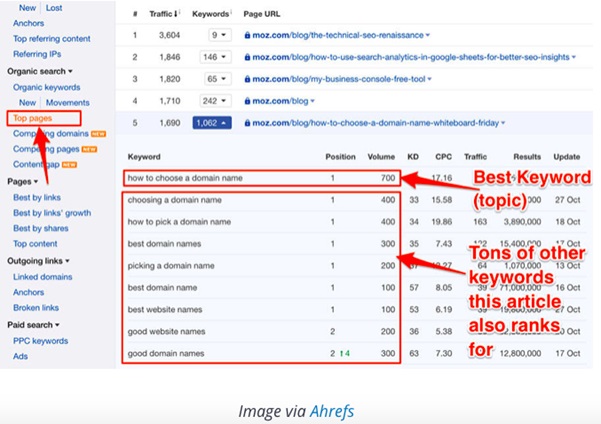
It could also help you find the keywords which your competitor is ranking for.
A single page could rank for tons of keywords. So find the keywords that have a good search volume and low Keyword Difficulty and create a content around that.
ANOTHER thing you we typically do is go with titles of topics which are getting organic traffic without much referring domains.
Those are the Low hanging fruits. You can build a really good content around those topics and create good backlinks that will make sure you outrank your competitor for that topic and get that traffic.
Want to drive immediate traffic to your website through blog content? Learn how to find low-hanging content ideas from all over the web.
Find the CPC keywords
This basically means you want to find keywords that your content competitors are ranking for. You could use Ahrefs to find that out. WE basically want to find keywords that people are paying to rank for. Most keywords terms that competitors are paying to rank are keywords which have high transactional intent – this also means they are closer to conversion. So make a note of those keywords.
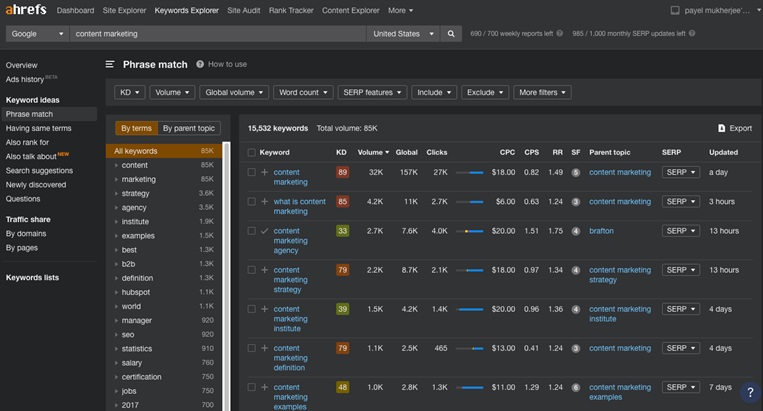
Simply go to Ahrefs, go to keyword explorer and add a broad keyword for your niche and sort as per the CPC.
Look at how you can create topics out of these keywords.
Find your competitors’ featured snippets
Snippets is one of the many Google SERP features. We want to focus on this because the average CTR of a snippet is almost 8.6%.
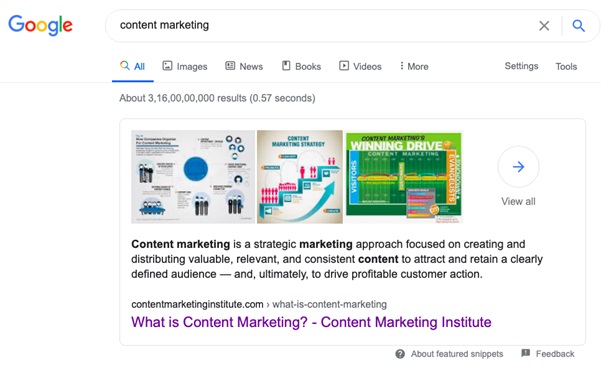
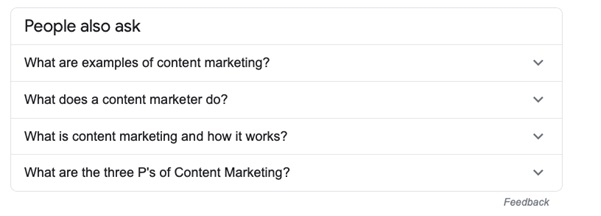
Also snippets usually carry keywords with a high informational intent. Hence these are great for awareness. You definitely want to know which snippets your competitors own, and work on those keywords and titles.
An easy way to find that out is to go to Ahrefs, go to site explorer, mention your competitor domain, go to organic keywords, and then to SERP Features Filter and then tick Featured Snippets and People Ask for check boxes. And there you go, you get all those keywords that you can work for.
Find the Content Gap
It’s also a good idea to get an idea of which keywords you don’t rank for and your competitors do. For this too, we use Ahrefs.
Site Explorer > enter your domain > Content gap
Fill in the names of your competitor domains and you will get a list of keywords they are ranking for and your are not.
You start trying to rank for keywords that have higher volumes and low keyword difficulty ideally.
RELATED RESOURCE:Everything About Content Audit in 2021 – What, Why, How & When?
Finally look at Google Search
When you type in any keywords, what are the best topics that are out there. These can give you a lot of idea on how sort of topics you can do for a particular keyword.
It is showing what people are searching for. Try and see if you can use the topics that its showing for your category and how you can address them in your content calendar.
Also do not forget to see the keywords that are suggested by Google at the bottom of the page.
5. Find Topics that will Drive Traffic to your Website
Now that you have your list of keywords, make sure you are choosing the right topics.
Here are the best ways to find those topics that will get you the traffic that you are craving for.
Answer questions that customers are likely to ask at the Bottom of the Funnel.
Your sales team can provide valuable insights into what your customers or buyers are asking or likely to ask. Try to create blogs around them. When you are offering answers to your customers pain points, you are offering great value. These blogs are ideally answer your bottom of the funnel questions – questions that are asked by buyers before they make a final decision.
Editor Note: Blogs topics that answer your customer’s questions will mostly be transactional keywords. These will be related to price and quality of your product or service offerings. These blogs will probably drive lesser traffic but they will definitely help you convert more customers”.
Build topics around every kind of question that a buyer can ask during the Exposure Stage.
For this, the easiest way is to head to Answer the Public website and check out all types of questions your audience is asking for a particular keyword in your niche.
Answer the public is a great tool to find out what buyers are searching for in your category. There are some great Informational topics here.
Most keywords related to informational stage will start with a how, what, why, when, guides, tutorials, tips, examples etc.
You could also use tools like SEMrush, Moz, Ahrefs to help you find keywords by typing some of the main informational keywords into the keyword explorer and then clicking “Having Same Terms” to find similar keywords with informational intent. Create topics using around those long-tail keywords.
Scour Communities and Internet Forums
Groups and Forums are great places to find out topics. People are always asking questions or discussing common pain points across different niches and categories.
Quora, REDDIT are great examples of this. When it comes to Quora, pick questions that have engagement around them. If you are not sure what intent it carries, take the keyword and put it on Google. You will instantly know whether the intent behind it is informational (related to exposure) /transactional (related to Purchase) /commercial (related to evaluation)/navigational (related to exploration).
The idea is to find communities around your niche and listen to your audience.
Find topics that show your expertise in the field. Find subtopics or further subtopics.
Finally, pick topics that give you the opportunity to create thought leadership and build authority. Find topics that will always be relevant to your audience. If you find the main topics have been exhaustively covered, find subtopics that relate to the main topic and then find further subtopics.
You do not always have to original in finding the topic. You can always find out which topics have worked for others with the keywords you are targeting and work towards making that post better in terms of value.
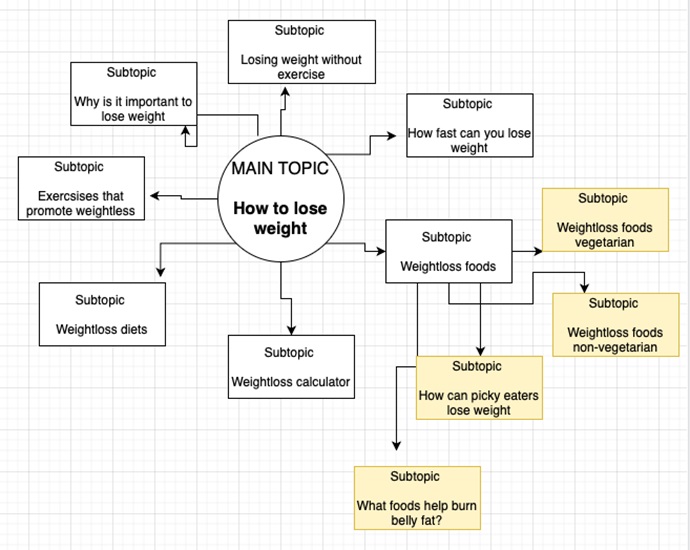
Editor Note: Enrich the content by adding information that you might have gathered from experience of selling a service or a product – something that can teach your reader or viewer something of value or help solve a pain point”.
Refurbish Old Content
Before you push a whole new lot of content, make sure you are refurbishing your content. Your old content has a much better chance of getting you ranking for your keyword than a new one. So here is what you should do.
- Find out the blogs that have attracted traffic before but are not doing so now. Upgrade the content in them and republish. You should see an immediate jump in traffic.
- Find out blogs that have not done well in terms of getting traffic. See how you can redo them by adding more relevant keywords, by adding more questions that people ask for in search engines, by adding more relevant content. Republish.
Check what competition is doing and blogs which
Finally, always see what topics your competitors are writing on. Do not just blindly copy the topics. Use Ahrefs to find out what are the top pages that are ranking for your competitors and what is the kind of topic that has drawn traffic to them in large amounts.
Pick on that topic, and find ways to cover the topic better than they have done.
6. Create a content calendar
Now that you know what type of content you want to create, what keywords you want to use, what topics you want to do, you need to create a content calendar to finalise your schedule. This will help you visualise your publishing plan and put it into action. You goal should be to publish as often as possible, without compromising on quality.
Here are the main things to put in a content calendar:
- The topics you want to cover for say a month, or 3 months. Starting with a month is easier.
- The content formats you plan to create
- The days you want to publish
- Who is going to write and edit that content
- Timelines and updates
While there are plenty of free content calendar templates that you can find online, it is always best to create your own content calendar.
RELATED CONTENT: Here is a great guide on how to create a simple content calendar and boost your marketing strategy.
7. Plan How will You Promote Your Content
This is a common misconception. People think just because they have invested in creating content, and put in the right keywords, it will automatically start ranking.
Well, let us clear this thing out – content does not just appear in front of your audience. It has to be made to appear in front your audience. And that is why you need to promote your content.
Here are simple content promotion strategies that you can use to promote your content.
Email your subscriber base that you have posted new content
This is the easiest thing to do. Create a simple email, or use a mail template, summarising what you have written about and send it to your customers and email subscribers. Make sure you email them your best content and that it has the great subject line. If you they get used to opening your mail and finding bad content, they are most likely going to ignore your future mails.
Invest a small budget in promoting the ads on social media
A lot of clients tell us they do not want to spend money on paid media to promote their content, since they consider that a paid strategy. That is a wrong approach.
A small amount of money spent on Facebook, Instagram, Pinterest or Youtube ads to boost your content can get you a lot of benefits. For starters, it puts your content in front of thousands who do not know about your brand. Hence it increases your brand visibility and easily let’s your content be seen by an audience which otherwise would not have known about it.
The best part is you can track how your audience is engaging with your content – how many have seen it (impressions), how many have clicked to read it (website traffic), and how many have converted (reached your with a query).
Use SEO to build links to your content
Your content can rank if it has backlinks leading to your site. And that is what SEO does. Creating strong backlinks so that traffic keeps flowing to your website and discover your content. This is a great long-term strategy for promoting your blogs. One of the best ways to create backlinks to your site is to also post them on popular online communities like –
- Quora
- Medium
- Slideshare
- Youtube
HANDY TIP: Use this ready guide to find a Complete List of the Best Content Distribution Platforms that you must use to promote your content.
Invest in Guest Posts
Guest Posts are a solid way of earning backlinks. They not only help users discover your brand but also help you build brand authority in your niche.
Try to reach out to brands that are targeting the same audience as you are, only offering a different product or a service. Once they agree, you submit a great piece of content that is related to your niche. The purpose is to not only build brand awareness but also to use that piece of content (by inserting a link in the body or from the author bio) to drive traffic back to your site.
Editor’s Note: Bookmark blogs you have seen written by guest writers. There must be a ton of people reaching out to you for links. Write back asking them for the same thing. Wherever possible, ask for swapping links”.
Outreach to influencers
Any great piece needs outreach. You need to reach out to influencers who can reshare that content to their user base. But outreach is not easy. It needs a dedicated approach and smart writing skills or else your emails will simply get a glance and dump treatment.
Repurpose any great content that has been published
What this means is you take the content format and change it into a different format and publish it for a different audience.
For example, you have written a great blog. Create a slideshare out of it and publish it on Slideshare, or a small video out of it and publish it on Youtube. You could also create an infographic out of the same content and post it on sites that are all about infographic content.
The intention is to cater to an audience which probably has not read your blog but will read your video, or your slideshare or your infographic.
If you are interested to know more about easy hacks to promote your content, read this piece on how to promote your promote your blog content with proven hacks.
Create multiple snippets and teasers from your content for social media
When you write a blog, create multiple snippets from each blog and schedule it for publishing it on social media, especially Twitter which has an audience that likes short content. Keep pushing out those snippets for weeks or even months. Each time, you will get some amount of new traffic to your content.
Also another thing that most of us forget to do for our content promotion is create teasers for our content. This especially works for sites like Instagram, which has a more visual audience. Use the visuals you are using for your blog to create a quick teaser on Insta or Facebook and then link to your content. It is likely to get your more traffic than the ordinary blog post.
8. Track Your Results from Content Marketing
This is the final and most important step. How do you plan to monitor the work that you have put in to build your content, optimise it and promote it. It is crucial to monitor the results since this will tell you how your content is performing.
One of the first things is to head to Google Analytics and check out how people consumed your content.
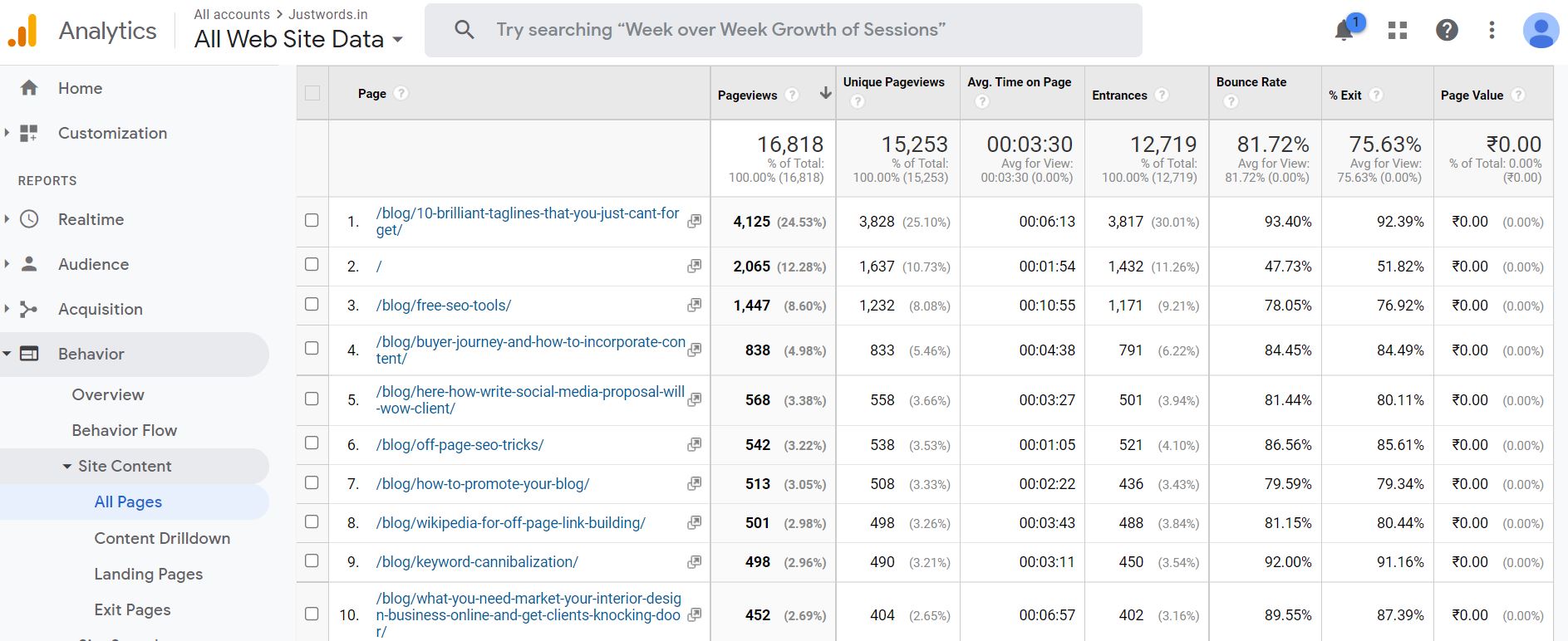
There are 3 things to check here mostly –
- Page views
- Average Time on page
- Bounce Rate
If you have goals set up for your content in your GA, then check out your leads through goal conversions. This, ofcourse, requires you to first set up goals in your GA.
Now all you have to do is to go to is
Conversions>Goals>Goal URLs
If you are using Social Media to promote your content, you need to check out the analytics of every platform to see how your audience has interacted with your content.
Finally, if you are sharing your content on social media, you need to track what kind of content is sending more traffic to your website, what kind of content is converting. For this, you can head back to GA and click on
Acquisition>Social>Overview.
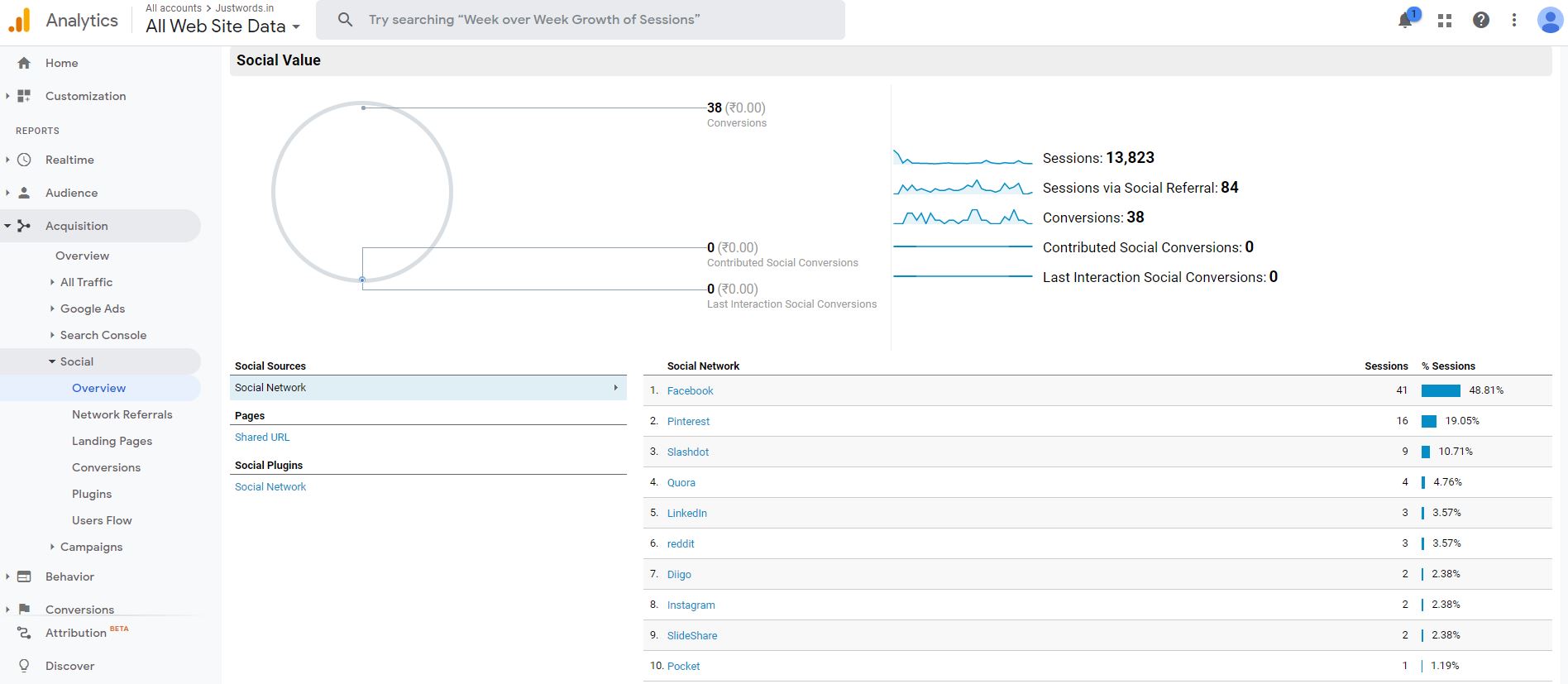
This will let you know what kind of content is actually working on social media and also how much traffic is being driven to your website because of paid promotions.
Wrapping it up
Remember that content marketing is a long term game. If you want to try it, then make sure you do not go about it randomly. A content strategy is what creates the framework for your content marketing and ensures that it works. Going about content marketing without building a content marketing strategy is a sure fire way to set up for content marketing failure.
There are way too many people investing in only content creation and thinking that they are investing in content marketing. There also loads of people who are brainwashed into investing in SEO services that is not backed up with a proper content creation strategy. That is also not going to deliver results in the long-run.
If you are looking for your business to gain brand visibility, get traffic and finally get leads, you need to invest in proper content marketing services. And that starts with a proper content strategy.
If you still have questions, send me a mail on payal@justwords.in and I would be happy to answer those.
RELATED CONTENT:
A Guide to Choosing from 12 Different Content Marketing Formats in 2021

